It looks like you're using an Ad Blocker.
Please white-list or disable AboveTopSecret.com in your ad-blocking tool.
Thank you.
Some features of ATS will be disabled while you continue to use an ad-blocker.
share:
a reply to: eriktheawful
You have completely missed the point.
The equation for finding the smallest "measure" that may be resolved is simple Trigonometry and does not take into account the size of the object being "viewed".
That "measure" is solely determined by the Dawes' Limit, and the distance to the target...nothing else.
And, you're right we cant see a 50 cm rock, but we could make out a 100 meter bolder!
You have completely missed the point.
The equation for finding the smallest "measure" that may be resolved is simple Trigonometry and does not take into account the size of the object being "viewed".
That "measure" is solely determined by the Dawes' Limit, and the distance to the target...nothing else.
And, you're right we cant see a 50 cm rock, but we could make out a 100 meter bolder!
I think I see part of the problem here:
No, you cannot. Those stars look like discs in that image not because you are seeing their actual, physical spherical surface, but because they are drastically over-exposed.
Similarly, in this photograph...
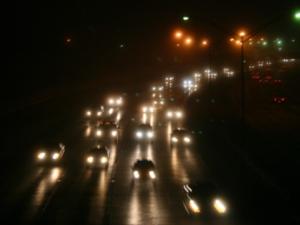
...some of those car headlights appear to be ~2 feet across when we know they are not actually that big.
In this photograph...
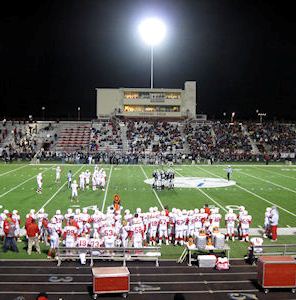
...the stadium light looks gigantic - 10-15 feet across at least! The camera aperture & shutter speed is set to properly expose the players on the field. They are much fainter than the stadium lights themselves, so these exposure settings drastically over-expose the light, which is actually an array of smaller bulbs rather than a single lamp. If you set the camera to more accurately show the light array, the playing field would be too dark to show up well at all.
Likewise, the stars in the Andromeda galaxy are much fainter than the nearby stars, so that when we set the telescope to properly image the distant galaxy, the nearby stars are totally over-exposed and appear much larger than they really are. Properly exposed and photographed with a modern digital CCD camera on any telescope on Earth or in orbit, those stars would only show up on a single pixel (because the Dawes limit makes most stars too small to resolve as discs) and the Andromeda galaxy would not show-up at all.
Interestingly, astronomers have been using interferometry to image some of the closest supergiant stars (>500 times larger in radius than our sun) and hope to someday use it to resolve exo-planets. Link
The Wikipedia article on exoplanets has a good primer on detection methods. Link
Hope this helps.
originally posted by: Wolfenz
You See those TWO Big Stars, there from of this Galaxy those TWO Big Object's ( right of the Screen )
Those Stars are from the Outer Reach's of OUR Own Galaxy... you know , as the Milky Way..
In other word's, those Star's are in the Way of that Galaxy for a Photo Shoot
yet you can pretty much see the Detail of those two Stars also..
No, you cannot. Those stars look like discs in that image not because you are seeing their actual, physical spherical surface, but because they are drastically over-exposed.
Similarly, in this photograph...

...some of those car headlights appear to be ~2 feet across when we know they are not actually that big.
In this photograph...

...the stadium light looks gigantic - 10-15 feet across at least! The camera aperture & shutter speed is set to properly expose the players on the field. They are much fainter than the stadium lights themselves, so these exposure settings drastically over-expose the light, which is actually an array of smaller bulbs rather than a single lamp. If you set the camera to more accurately show the light array, the playing field would be too dark to show up well at all.
Likewise, the stars in the Andromeda galaxy are much fainter than the nearby stars, so that when we set the telescope to properly image the distant galaxy, the nearby stars are totally over-exposed and appear much larger than they really are. Properly exposed and photographed with a modern digital CCD camera on any telescope on Earth or in orbit, those stars would only show up on a single pixel (because the Dawes limit makes most stars too small to resolve as discs) and the Andromeda galaxy would not show-up at all.
Interestingly, astronomers have been using interferometry to image some of the closest supergiant stars (>500 times larger in radius than our sun) and hope to someday use it to resolve exo-planets. Link
The Wikipedia article on exoplanets has a good primer on detection methods. Link
Hope this helps.
originally posted by: eriktheawful
a reply to: tanka418
There is quite a bit of difference between detecting, and seeing.
We can detect a drop in light level of a star when something passes between it and us. If it does so on a regular schedule, showing a period, then it becomes obvious that it is an object in orbit around that star.
When the star light is examined when that object passes in front of it, yes, we can even tell if it has an atmosphere and what makes up that atmosphere.
But....
That is not the same thing as being able to optically see the object and resolve details of it's surface.
Please provide links to the images of these exoplanets that you say we are seeing. I would dearly love to see what they look like. What kind of contenents they have, oceans, craters, and for the gas giants, it would be wonderful to see their gas bands, etc.
To date: we do not have anything powerful enough to show us details of these object's surface features.
Please provide the links to the images that do show these details. I would be more than happy to be wrong about this.
Well I guess you're in lick; I haven't seen any links to actual images. Only the actual data as is contained in the database...wherein it states the detection method was "imaging"...as opposed to "Transit", "Radial Velocity", or "microlensing". That data is on my site...or if you like you can visit: openexoplanetcatalogue.com...
perhaps this will help...
From a newsfeed:
First exoplanet visible light spectrum
It is also important to understand that we don't get "readings" of an exoplanet's atmosphere without being able to actually "see" it. When that planet passes in front of it host star, the size of the "spectra image" is typically too small to resolve, and, with my small telescope I will have to rely on a random microlensing event, and keep my fingers crossed that I get one...on the other side of all that; I do expect such an event to occur.
Finally...One does not have to see surface detail to "see" an exoplanet.
edit on 26-6-2015 by tanka418 because: (no reason given)
a reply to: eriktheawful
Erik I appreciate that elegant and straight-forward explanation. Thanks to you, I now understand why I can't see anything up ahead when driving with my reading glasses on...and why I can't see all the map details on my GPS with my reading glasses off. Thank-you!
Erik I appreciate that elegant and straight-forward explanation. Thanks to you, I now understand why I can't see anything up ahead when driving with my reading glasses on...and why I can't see all the map details on my GPS with my reading glasses off. Thank-you!
originally posted by: tanka418
Finally...One does not have to see surface detail to "see" an exoplanet.
This is precisely why you are missing the point of this whole thread.
This thread is about resolution, not detection.
We can detect stars with our naked eyes, but (with one "glaring" exception) not resolve them as round objects.
Last night I could see Albireo - the "head" of Cygnus the swan - as a single point of light, but I needed my telescope to resolve it into two lovely stars (one blue and one gold).
The overwhelming majority of exoplanets discovered thus far have been detected by means other than direct observation (see the link in my previous post), because separating a dim planet from the glare of a bright star a fraction of an arc-second away is damnably difficult - and the only way we can do it at all is because the planets in question are points of light against a black background.
On the other hand, most surface features on a world (such as "that Moon rock") are not sitting against a helpful high-contrast background, but rather other objects of roughly similar albedo. This is why an Earthbound telescope can see a 100m asteroid in the blackness of space, but cannot resolve a 100m feature of the same albedo on the surface of the Moon.
Detection vs. resolution. This thread is about resolution.
a reply to: eriktheawful
Wow what you have just mentioned i have mentioned a short winded version instead of the Long Version
I know the history of Hubble
I know the Story of the Palamo & the Hooker ...
about there Huge Lens ...
and I Mentioned about the Atmosphere interference ...
and the Hubble was supposed to give more Clarity " Point Blank" because of that lack of Atmosphere interference
Wow what you have just mentioned i have mentioned a short winded version instead of the Long Version
I know the history of Hubble
I know the Story of the Palamo & the Hooker ...
about there Huge Lens ...
and I Mentioned about the Atmosphere interference ...
and the Hubble was supposed to give more Clarity " Point Blank" because of that lack of Atmosphere interference
originally posted by: tanka418
a reply to: eriktheawful
And, you're right we cant see a 50 cm rock, but we could make out a 100 meter bolder!
Why is that so, if the size of the object doesn't matter?
You're right in that the equation only involves angular size and doesn't deal with physical size. But angular size translates to physical size at any given distance. The physical size does matter for the purposes of calculating whether a telescope will be able to resolve a certain object or a certain feature on the surface of the object. That's why the Hubble can only see Pluto as a tiny blob of light, but would be able to resolve Jupiter's bands and the great red spot if Jupiter were located at the same distance as Pluto.
edit on 27-6-2015 by wildespace because: (no reason
given)
a reply to: tanka418
When here on ATS, you will have many members that ask just that question.
You will say "Yes. We can see that planet orbiting another star."
Members here will ask your for an image of it. Because they want to see what the planet looks like.
You will tell them that you don't have an actual image to show them what it actually looks like, because we don't have any telescopes that have resolution with that much power to do so.
Members on here will come back with: "What? Why not? Hubble can see (insert some distant and very large celestial object here). Why can't it see that planet?"
Answer: The OP of this thread.
You can state many times over that we've been able to detect reflected light from a planet all you want. I'm not going to sit here and say that's not true. It is.
But it is NOT the same thing as being able to look at it with a telescope and resolve it's surface features into a coherent image that shows detail.
Anyone that that actually understands astronomy and telescopes will not argue this point.
When here on ATS, you will have many members that ask just that question.
You will say "Yes. We can see that planet orbiting another star."
Members here will ask your for an image of it. Because they want to see what the planet looks like.
You will tell them that you don't have an actual image to show them what it actually looks like, because we don't have any telescopes that have resolution with that much power to do so.
Members on here will come back with: "What? Why not? Hubble can see (insert some distant and very large celestial object here). Why can't it see that planet?"
Answer: The OP of this thread.
You can state many times over that we've been able to detect reflected light from a planet all you want. I'm not going to sit here and say that's not true. It is.
But it is NOT the same thing as being able to look at it with a telescope and resolve it's surface features into a coherent image that shows detail.
Anyone that that actually understands astronomy and telescopes will not argue this point.
So if Hubble can see things which are 13.54 kilometers big on the surface of Mars, how come the clearest capture of Mars from Hubble is a fuzzy red
dot?
originally posted by: EloquentThinker
So if Hubble can see things which are 13.54 kilometers big on the surface of Mars, how come the clearest capture of Mars from Hubble is a fuzzy red dot?
Really a fuzzy dot
Hubble image of MARS
edit on 27-6-2015 by wmd_2008 because: (no
reason given)
Ignore my comment. Was written in haste. Thanks for the clarification though.
a reply to: Wolfenz
The large BLOB on the right is M32 it's not a star!!!
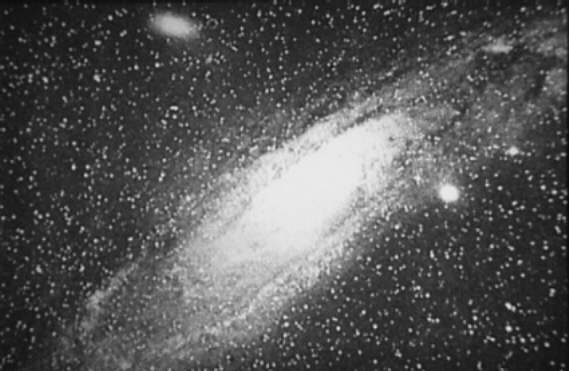
M31,M32,M110
Hubble does show better images when the picture below loads right click on it.
M31
Now is that enough proof for you
The large BLOB on the right is M32 it's not a star!!!

M31,M32,M110
Hubble does show better images when the picture below loads right click on it.
M31
Now is that enough proof for you
originally posted by: eriktheawful
a reply to: tanka418
When here on ATS, you will have many members that ask just that question.
You will say "Yes. We can see that planet orbiting another star."
Members here will ask your for an image of it. Because they want to see what the planet looks like.
You will tell them that you don't have an actual image to show them what it actually looks like, because we don't have any telescopes that have resolution with that much power to do so.
Images of exoplanets...
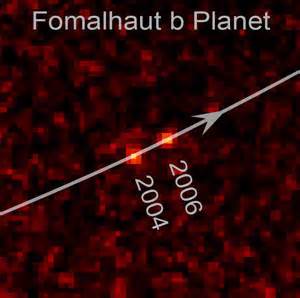
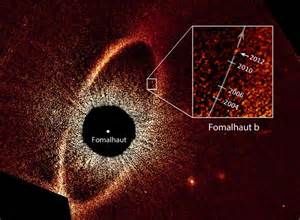
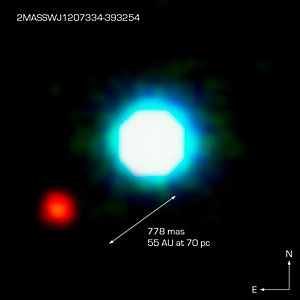
Anyone that that actually understands astronomy and telescopes will not argue this point.
IF you say so...by the way...who is it that is actively designing a planet detection system?
And, I do hope that all of y'all understand that the act of "seeing" involves the "detection" of reflected light...so, IF One can see the reflected light of a star off a near by planet; then by definition...you are seeing the planet!
originally posted by: wildespace
originally posted by: tanka418
a reply to: eriktheawful
And, you're right we cant see a 50 cm rock, but we could make out a 100 meter bolder!
Why is that so, if the size of the object doesn't matter?
You're right in that the equation only involves angular size and doesn't deal with physical size. But angular size translates to physical size at any given distance. The physical size does matter for the purposes of calculating whether a telescope will be able to resolve a certain object or a certain feature on the surface of the object. That's why the Hubble can only see Pluto as a tiny blob of light, but would be able to resolve Jupiter's bands and the great red spot if Jupiter were located at the same distance as Pluto.
You are over thinking this...
Yes the size of an object matters. However, it is not involved in determining what the optics (telescope can resolve...only whether you can see that object at some given distance.
in other words...the size of the object you are viewing does not affect the resolution of the telescope. That object's size will only affect your ability to view that specified object.
originally posted by: tanka418
originally posted by: wildespace
originally posted by: tanka418
a reply to: eriktheawful
And, you're right we cant see a 50 cm rock, but we could make out a 100 meter bolder!
Why is that so, if the size of the object doesn't matter?
You're right in that the equation only involves angular size and doesn't deal with physical size. But angular size translates to physical size at any given distance. The physical size does matter for the purposes of calculating whether a telescope will be able to resolve a certain object or a certain feature on the surface of the object. That's why the Hubble can only see Pluto as a tiny blob of light, but would be able to resolve Jupiter's bands and the great red spot if Jupiter were located at the same distance as Pluto.
You are over thinking this...
Yes the size of an object matters. However, it is not involved in determining what the optics (telescope can resolve...only whether you can see that object at some given distance.
in other words...the size of the object you are viewing does not affect the resolution of the telescope. That object's size will only affect your ability to view that specified object.
I'm sorry but you got it the other way round. There's a difference between seeing something (like a star) and being able to resolve it. You can see stars thousands of light years away with the naked eye, but you can't resolve them. However, you can resolve the Andromeda galaxy core as an oval patch of dim light with the naked eye, if you're in a dark sky location. This is because that galactic core is absolutely enormous compared to any star, even though it's located at around 2.5 million ly away from us. So, the size does matter in what an optical system (such as your eye or a telescope) can resolve, as opposed to just being able to see it.
I can't help that this is one of those petty and purposeless arguments that serious and informative ATS threads get sometimes littered with.
Pray tell us how can we discuss the resolving ability of the Hubble Telescope of objects like Mars or Pluto without bringing up their size, or the size of features on their surfaces?
edit on 27-6-2015 by wildespace because: (no reason given)
originally posted by: eriktheawful
a reply to: japhrimu
Well, as I said, Hubble's angle of resolution for the Moon means anything under 1 km in size isn't going to show up too well.
However! A camera in orbit around the Moon can do much better! And we have one of those. It's call the LROC, and it's able to see things down to under 1/2 a meter big!
Here's one of the web sites dedicated to it, and the many place you can zoom in and you CAN see a 2 foot wide rock just fine!
LROC QuickMaps
Pretty amazing the lengths taken to not photograph the moon, our closest neighbor with anything at all that can give good quality resolution.
Or is that just the usual incompetence ???
Where are the MOON SATELLITE HI-RES PICS.
We have only been waiting for, well FOREVER for them.
edit on 27-6-2015 by ParasuvO because: (no reason given)
originally posted by: ParasuvO
originally posted by: eriktheawful
a reply to: japhrimu
Well, as I said, Hubble's angle of resolution for the Moon means anything under 1 km in size isn't going to show up too well.
However! A camera in orbit around the Moon can do much better! And we have one of those. It's call the LROC, and it's able to see things down to under 1/2 a meter big!
Here's one of the web sites dedicated to it, and the many place you can zoom in and you CAN see a 2 foot wide rock just fine!
LROC QuickMaps
Pretty amazing the lengths taken to not photograph the moon, our closest neighbor with anything at all that can give good quality resolution.
Or is that just the usual incompetence ???
Where are the MOON SATELLITE HI-RES PICS.
We have only been waiting for, well FOREVER for them.
Um... the guy just mentioned and linked the LRO stuff to you, so the least you could do it Google it and feast your eyes on the thousands of high-rez photos of the Moon, typically 0.5 meter/pixel and in places down to 25 cm/pixel. Is that not good enough for you?
Even the Apollo metric camera images, taken in the 60s and early 70s, have a very good resolution that allows you to see small craters and individual boulders.
A little bit of research can help deny ignorance.
originally posted by: wmd_2008
a reply to: Wolfenz
The large BLOB on the right is M32 it's not a star!!!
M31,M32,M110
Hubble does show better images when the picture below loads right click on it.
M31
Now is that enough proof for you
Very Correct!!!
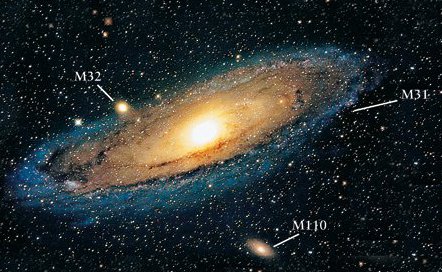
So your Telling me those are also Elliptical Galaxy's ? or are they Stars ( Ones Circled ) from our Own Galaxy caught in View ?
The Ones Box I was referring too .. but yeah I knew that was a Elliptical Galaxy M32
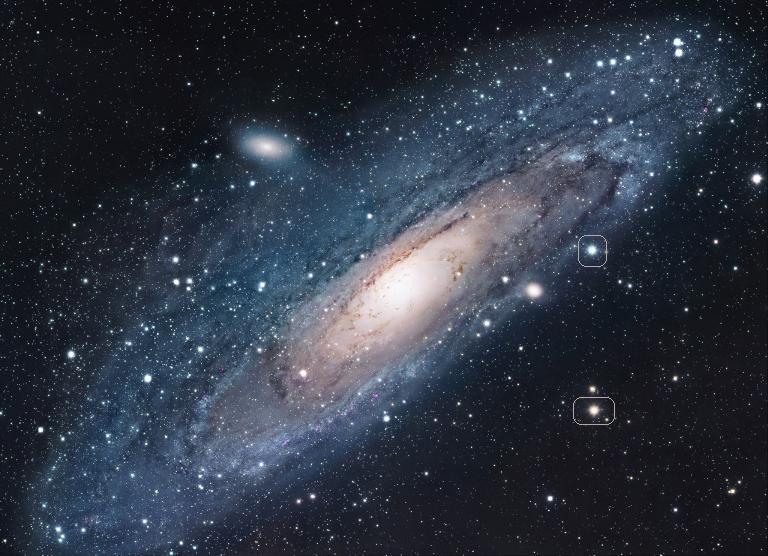
Sorry about that, should of used this pic instead was trying for a much older PIC
So Tell Me thanks ..
Yeah Im not all Knowledgeable in Astrology...
new topics
-
Canada Banning more Shovels
General Chit Chat: 1 hours ago -
A priest who sexually assaulted a sleeping man on a train has been jailed for 16 months.
Social Issues and Civil Unrest: 6 hours ago -
The goal of UFO's/ fallen angels doesn't need to be questioned - It can be discerned
Aliens and UFOs: 6 hours ago
top topics
-
Jan 6th truth is starting to leak out.
US Political Madness: 13 hours ago, 21 flags -
DONALD J. TRUMP - TIME's Most Extraordinary Person of the Year 2024.
Mainstream News: 14 hours ago, 9 flags -
Top Sci Fi/Horror Crossover Movies
Movies: 17 hours ago, 8 flags -
Biden pardons 39 and commutes 1500 sentences…
Mainstream News: 12 hours ago, 8 flags -
Deep state control - How your tax dollars are used to censor and brainwash
Propaganda Mill: 14 hours ago, 4 flags -
The goal of UFO's/ fallen angels doesn't need to be questioned - It can be discerned
Aliens and UFOs: 6 hours ago, 3 flags -
A priest who sexually assaulted a sleeping man on a train has been jailed for 16 months.
Social Issues and Civil Unrest: 6 hours ago, 2 flags -
Canada Banning more Shovels
General Chit Chat: 1 hours ago, 1 flags
active topics
-
-@TH3WH17ERABB17- -Q- ---TIME TO SHOW THE WORLD--- -Part- --44--
Dissecting Disinformation • 3651 • : duncanagain -
And Here Come the Excuses!!
General Conspiracies • 196 • : cherokeetroy -
Canada Banning more Shovels
General Chit Chat • 0 • : 727Sky -
Drones everywhere in New Jersey
Aliens and UFOs • 89 • : KrustyKrab -
Top Sci Fi/Horror Crossover Movies
Movies • 9 • : BeyondKnowledge3 -
Jan 6th truth is starting to leak out.
US Political Madness • 18 • : BeyondKnowledge3 -
The goal of UFO's/ fallen angels doesn't need to be questioned - It can be discerned
Aliens and UFOs • 6 • : BeyondKnowledge3 -
A priest who sexually assaulted a sleeping man on a train has been jailed for 16 months.
Social Issues and Civil Unrest • 9 • : BeyondKnowledge3 -
CNNs DON LEMON hints that Zucker's Disgraced Exit May Doom His Black Gay Primetime Anchorship.
Education and Media • 46 • : WeMustCare -
DONALD J. TRUMP - TIME's Most Extraordinary Person of the Year 2024.
Mainstream News • 25 • : WeMustCare
